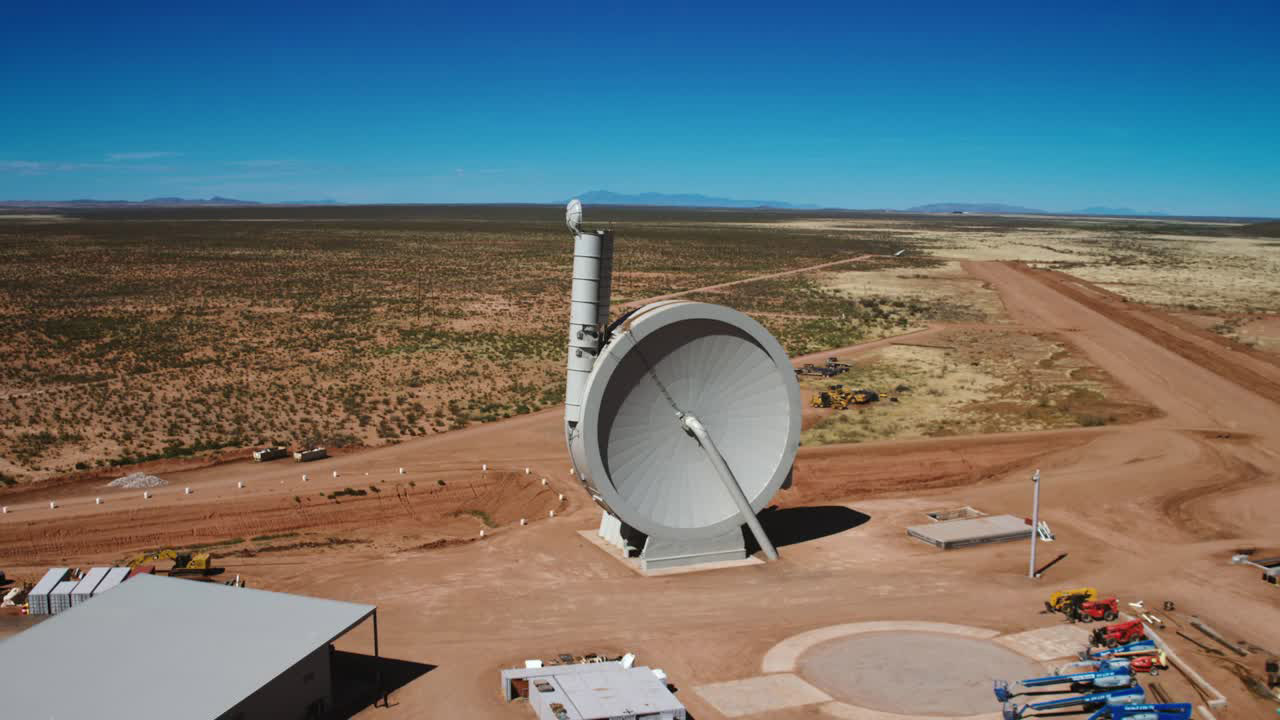SpinLaunch Looks to Electrify Satellite Launches

The world is currently in a transition from cars with gasoline-powered internal combustion engines to vehicles powered by electricity and batteries. A company named SpinLaunch is pursuing a somewhat similar strategy when it comes launching satellites into orbit, though it has developed an unusual technique for doing so.
Instead of a launch vehicle that uses chemical propellants, SpinLaunch is developing an electric-powered system that uses a rotating arm in a large vacuum chamber to accelerate a payload vehicle faster and faster until it is released through a tube and heads toward space. Once the vehicle reaches a certain altitude, the vehicle will split and release a chemical-powered second stage that would take the satellite all the way to low Earth orbit (LEO).
SpinLaunch is aiming to launch satellites weighing between 20 kg (40 lb) and 200 kg (441 lb). The company claims its electric drive will produce a 4x reduction in the fuel required to reach orbit and a 10x reduction in launch costs.
SpinLaunch has said its Orbital Accelerator will also be able to launch multiple times per day. Traditional launch pads used for chemical rockets do not have that capability.
SpinLaunch has accelerated payloads up to 10,000 times the force of gravity using the company’s 12-meter Lab Accelerator at its headquarters in Long Beach, California.
Engineers then integrated the same payloads into a flight test vehicle that was launched on Sept. 22, 2022, using the company’s 33-meter Suborbital Accelerator at Spaceport America in New Mexico. The vehicle reached an altitude of 25,000 ft. (7,620 meters) on the program’s 10th flight test.
“Although altitude is a common question, the key metric is revolutions per minute (RPM). The Suborbital Accelerator flight tests were conducted at rotational speeds (in RPM) similar to that of the orbital system, thus providing data-driven validation of the release sequence timing and structural dynamics of the orbital system,” David Wrenn, SpinLaunch’s vice president of technology, told SpaceRef over email.
“Last year, we had a series of test flights planned to validate remaining key aspects of the technology required for the Orbital Launch System,” Wrenn told SpaceRef. “More specifically, successfully operating the high speed airlock technology, and monitoring of structural rotordynamics at scale, were essential final steps in validating the launch technology as a whole. Additionally, construction and operation of the Suborbital Accelerator has provided real-world validation of the orbital system development and economics.
“While no additional tests are necessary prior to the start of construction on the orbital system, additional flight tests for strategic partners, customers, and validation of components will occur. Long term, the Suborbital Accelerator will continue to serve our customers and operate as a satellite qualification facility,” Wrenn added.
In order to reach orbit, SpinLaunch will need to construct a 100-meter Orbital Accelerator. Wrenn said the company has made “significant progress” in identifying potential coastal launch sites while development work continues.
“With two mass accelerators now complete, the 12-meter diameter prototype accelerator at the SpinLaunch Headquarters, and 33-meter diameter Suborbital Accelerator at Spaceport America, we’re confident in our ability to bring the Orbital Launch System online within three years, when considering technology readiness, regulatory compliance, and construction timelines,” Wrenn said.
Last year, SpinLaunch introduced a family of satellite buses that will complement its Orbital Accelerator.
SpinLaunch has raised $150 million and is planning a Series C round for which the company has received strong signals of interest from investors, Wrenn said.
“SpinLaunch has applied the same know-how and guiding principles from the mass accelerator to satellite buses, designing them for high cadence and low cost,” Wrenn said. “Through a combination of modular design, using digital technologies, and designing for mass production, the satellite buses require significantly less labor to build, delivering exceptional value to our customers. Designed to be compatible with traditional rockets, our satellite buses are ideally suited for constellation customers looking to deploy services from LEO.”
The S-20 satellite bus is a 12U CubeSat that weighs 40 pounds (20 kg) equipped with solar arrays capable of delivering approximately 100 watts of power.
“It is the ideal size mix for a range of applications, including LEO constellations that provide services such as Automatic Dependent Surveillance-Broadcast (ADS-B), Internet of Things (IoT), Machine to Machine communications (M2M), Automated Identification Services (AIS), or Emergency communications platforms. The bus is also ideally suited for prototyping, technology development, and experimentation such as scientific research, space systems R&D, flight heritage qualification, or Earth Observation (EO),” SpinLaunch said on its website.
The 200 kg (441 pound) S-200 satellite bus will provide payloads with 1,000 watts of power, with a capacity of 3,000 watts at its peak. The satellite is specially designed for SpinLaunch’s orbital accelerator with a design life of two to seven years.








